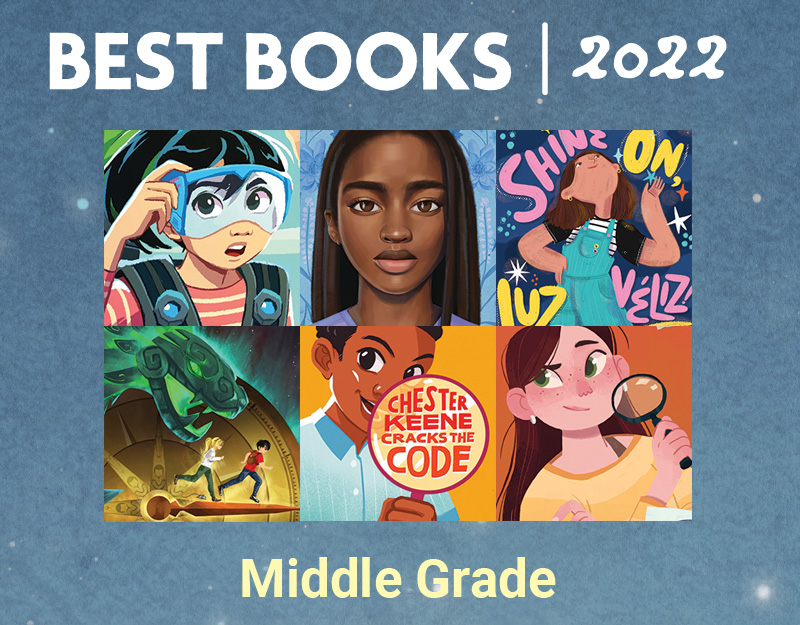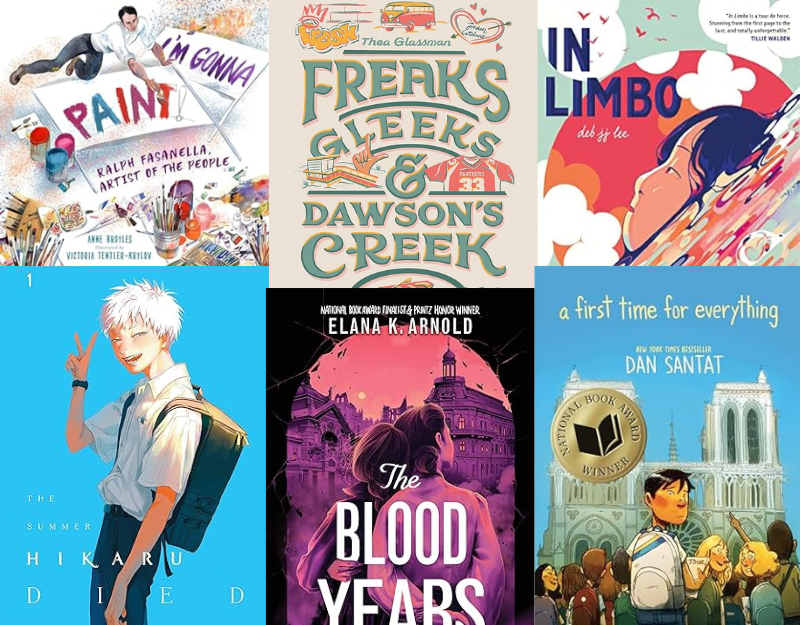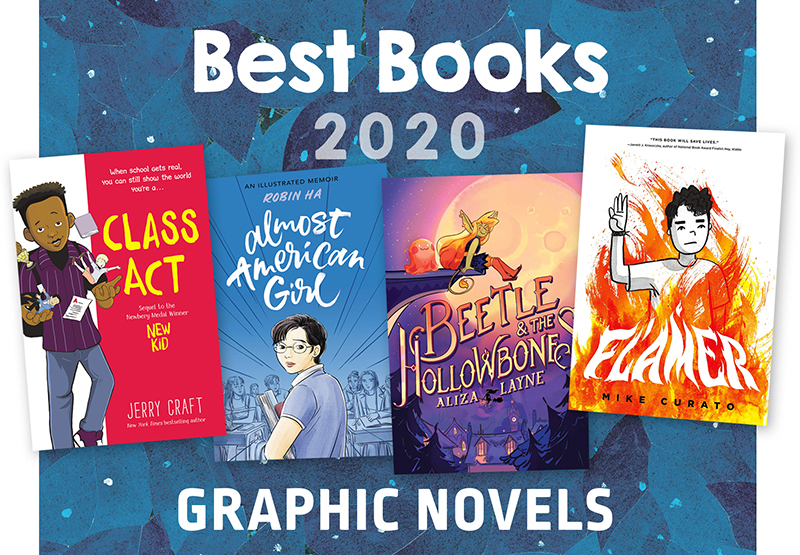Review of the Day – From Then to Now: A Short History of the World by Christopher Moore
 From Then to Now: A Short History of the World
From Then to Now: A Short History of the World
By Christopher Moore
Illustrated by Andrej Krystoforski
Tundra Books
$25.95
ISBN: 978-0-88776-5407
Ages 9 and up
On shelves now.
I have nothing but respect for contemporary historians. A few of them, let us be honest, are rock stars. They have to take something as strange and ephemeral as knowledge (such as it stands) about the past and make it into something relevant and interesting and coherent. These days historians also need to make sure they don’t follow in the footsteps of their forefathers and just focus everything on white people. I grant that it was easier to write history when it came down to just a single ethnicity, but talk about restrictive! Then there are the historians for children. They have to not only do all the aforementioned steps, but make history as accurate and simple, without being simplistic, as possible. It would be difficult enough to do all of this if your book was about a person or a country. Now imagine the challenge that comes from writing about the entire history of humankind in a scant 188 pages. With pictures, no less. Leave it up to the Canadians to get it right. Toronto historian Christopher Moore does his best to render an entire world in a single book without putting the whippersnapper young readers to sleep. That he manages it has got to be some kind of miracle right there.
As Moore says in his Preface, “When does a history of the world – even a short history of the world – start? This history starts with people.” So it is that we are plunged into the past. From rice farmers in China to The Great Pyramid of Giza. From Cleopatra to Martin Luther. Though he can only provide the barest of overviews, Moore takes care to give history a kind of structure, allowing student readers the chance to find the aspects that interest them the most for future study on their own. The book includes an explanation of BCE and CE vs. BC and AD in an Author’s Note, as well as an Index and a map on the endpapers of places named in the text. Very oddly, no Bibliography appears here. Strange indeed.
ADVERTISEMENT
ADVERTISEMENT
The endpapers of this book, displaying a map with highlighted locations, pretty much give you a blunt encapsulation of where Moore’s attention is going to focus in this text. You can sort of tell that the author is a Canadian right off the bat since L’Anse aux Meadows and Ramah Bay make the cut. The map identifies places that will come up in the text. Folks will undoubtedly object to the areas of the world that seemingly do not warrant a mention, but don’t be fooled. Just because a major metropolitan area in Australia doesn’t appear on the map that doesn’t mean that it has been excised from Moore’s history. A cursory examination of the Index yields at least 18 pages where the lands, and the Aborigines, are mentioned.
 As for the text itself, Moore has been exceedingly careful. He starts off with the hominids of Africa, gives an overview of how they spread, launches into the Ice Age, goes into the whole hunter/gatherer society thing, and next thing you know you’re in the next chapter, “Learning to Farm”. He doesn’t mince words, this guy. As you read, you realize that Moore’s focus is vast. It contains multitudes. He’ll mention the gardeners of the Middle East then segue casually into the island of New Guinea, the river valleys of China, Central American valleys, and other parts of Africa. Reading this, kids get the sense of worldwide connections. One culture comes up with this technique and it is found over here in this other culture as well. Moore’s focus is wide at the start of the book. He’ll give the Greeks and Romans their time in the sun but not before he’s discussed “The Golden Empires” of 5000 BCE – 1000 CE and cultures that cultivated laws and gods from the same time period. Europe get a chapter of its own, but its title is “A Peninsula West of Asia” which is a nice change for folks who’ve heard Asia referred to as “the far east” all these years. As the book progresses more and more attention is paid to Europe and the Americas, but Moore never loses sight of the world itself. The chapter called “Europe’s World” covers colonization, but also takes time to mention details like Japans Tokugawa shoguns, etc. By the end we finish with Mandela, Martin Luther King Jr., and Gandhi. Then there’s an Epilogue where the author discusses how Canada has changed, placing it within the global sphere, which is kind of awesome in and of itself.
As for the text itself, Moore has been exceedingly careful. He starts off with the hominids of Africa, gives an overview of how they spread, launches into the Ice Age, goes into the whole hunter/gatherer society thing, and next thing you know you’re in the next chapter, “Learning to Farm”. He doesn’t mince words, this guy. As you read, you realize that Moore’s focus is vast. It contains multitudes. He’ll mention the gardeners of the Middle East then segue casually into the island of New Guinea, the river valleys of China, Central American valleys, and other parts of Africa. Reading this, kids get the sense of worldwide connections. One culture comes up with this technique and it is found over here in this other culture as well. Moore’s focus is wide at the start of the book. He’ll give the Greeks and Romans their time in the sun but not before he’s discussed “The Golden Empires” of 5000 BCE – 1000 CE and cultures that cultivated laws and gods from the same time period. Europe get a chapter of its own, but its title is “A Peninsula West of Asia” which is a nice change for folks who’ve heard Asia referred to as “the far east” all these years. As the book progresses more and more attention is paid to Europe and the Americas, but Moore never loses sight of the world itself. The chapter called “Europe’s World” covers colonization, but also takes time to mention details like Japans Tokugawa shoguns, etc. By the end we finish with Mandela, Martin Luther King Jr., and Gandhi. Then there’s an Epilogue where the author discusses how Canada has changed, placing it within the global sphere, which is kind of awesome in and of itself.
The book is riddled with little sidebars here and there that break up the text. These serve the necessary purpose of keeping you from falling asleep mid-read. Not that the text is boring, but some of us fiction junkies need a little visual jolt of stimulation if we are going to continue reading about the past, no matter how well-written it might be. Many of these sidebars are amusing. Some are baffling. I could understand why you would include the story behind the construction of the Taj Mahal, but the final sidebar explaining what haggis is . . . really?
 Let’s be blunt. If a kid protests that they do not like history, that they will never like history, and that you cannot force them to enjoy this book then they won’t. Probably. It’s the open-minded child that’s going to benefit from reading From Then to Now. That and the kid who loves history (I have seen them and yes, they do indeed exist). Those kids will read this book for pleasure. Then there are the kids doing homework assignments. They’re going to walk into libraries nationwide saying, “I’m doing a report on [the Mwene Mutapa empire / Montezuma / the Terracotta Army / take your pick] and I need three books to show my teacher.” The children’s librarians on duty will carefully find what they can, but eventually they’ll discover that they haven’t enough books on that subject. In desperation they will pluck From Then to Now off the shelf and page frantically through the Index only to find that YES! This book does cover that particular subject, and it gives enough information that the kid can use it for the report. An ideal use of the title? Maybe not, but it’s entirely possible that the kid might page through it later and catch a glimpse of a sidebar with a name like “Fermented Shark” or a picture of an atom bomb and start to read. It could happen.
Let’s be blunt. If a kid protests that they do not like history, that they will never like history, and that you cannot force them to enjoy this book then they won’t. Probably. It’s the open-minded child that’s going to benefit from reading From Then to Now. That and the kid who loves history (I have seen them and yes, they do indeed exist). Those kids will read this book for pleasure. Then there are the kids doing homework assignments. They’re going to walk into libraries nationwide saying, “I’m doing a report on [the Mwene Mutapa empire / Montezuma / the Terracotta Army / take your pick] and I need three books to show my teacher.” The children’s librarians on duty will carefully find what they can, but eventually they’ll discover that they haven’t enough books on that subject. In desperation they will pluck From Then to Now off the shelf and page frantically through the Index only to find that YES! This book does cover that particular subject, and it gives enough information that the kid can use it for the report. An ideal use of the title? Maybe not, but it’s entirely possible that the kid might page through it later and catch a glimpse of a sidebar with a name like “Fermented Shark” or a picture of an atom bomb and start to read. It could happen.
Speaking of pictures, the art in this book is by the Polish born artist Andrej Krystoforski. I’ll admit here and now that I’m not a huge fan of the book jacket. I can see what they’re trying to do there, with the multicolored land resembling a human being gazing up at an astronaut. It’s not the most enticing cover I’ve ever laid eyes on, though. It suggests that Krystoforski’s style is thick and blunt (never mind that the astronaut is rendered in delicate detail). Inside you can see that Krystoforski’s watercolors and gouache make for good full-color detailed interstitial additions. Like the sidebars they break up the text. Unlike the sidebars, they always seem to be in the right place at the right time.
From Then to Now was the proud winner of the Governor General’s Award in Children’s Text beating out titles that sound like a lot more fun on paper like Kenneth Oppel’s Frankenstein prequel This Dark Endeavor and Tim Wynne-Jones’s Blink & Caution. It was good of the judges to realize how oddly enjoyable this book makes history out to be. One might feel inclined to hand it to a kind along with Larry Gornik’s The Cartoon History of the Modern World (though Gornik is definitely not as good at looking beyond American and European borders to the world at large, that’s for sure). If you’re looking for an overview of world history written in the last ten years that does not consider the term “Manifest Destiny” a positive force for good, Christopher Moore’s your man. It’s not a reinterpretation of history. It’s a necessary reexamination, with our kids the winners. History may be written by the winners, but winners (as we can see here) aren’t restricted to a single country.
On shelves now.
Source: Borrowed copy from library for review.
Filed under: Best Books of 2011
About Betsy Bird
Betsy Bird is currently the Collection Development Manager of the Evanston Public Library system and a former Materials Specialist for New York Public Library. She has served on Newbery, written for Horn Book, and has done other lovely little things that she'd love to tell you about but that she's sure you'd find more interesting to hear of in person. Her opinions are her own and do not reflect those of EPL, SLJ, or any of the other acronyms you might be able to name. Follow her on Twitter: @fuseeight.
ADVERTISEMENT
ADVERTISEMENT
SLJ Blog Network
Tegan and Sara: Crush | Review
The Seven Bills That Will Safeguard the Future of School Librarianship
Take Five: Dogs in Middle Grade Novels
Gayle Forman Visits The Yarn!
ADVERTISEMENT








From Then to Now sounds wonderful! I’ll be placing a hold for this one today. Thanks.
Intriguing! I will order a copy of this for my own enlightenment, and will probably end up shelving it as a prequel/companion/fifth-cousin to Joy Hakim’s ambitious “The Story of US” series.
Clarifications — By “shelving,” I mean informally in my own personal collection, and by “prequel” I mean that, because it is a single volume, a younger reader who is daunted by the multi-volume Hakim series might fiind this an enticing way to get a world overview, and then be interested enough to focus in on the U.S. in the Hakim series. (That’s what I get for writing comments before I’ve had breakfast! lol)
After reading your entire review I was relieved that you were not recommending a history of the world by that other Christopher Moore. After what he did in “Lamb”, the mind boggles at his creation of history of the world for young’uns. Not that it wasn’t hysterically funny.
(http://www.chrismoore.com/lamb.html )